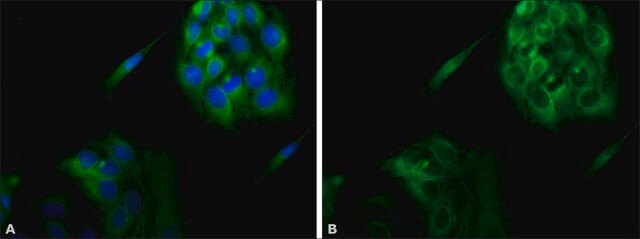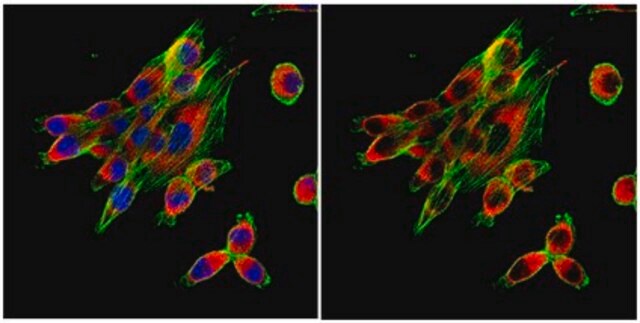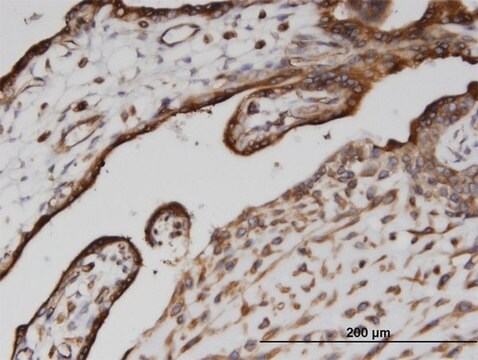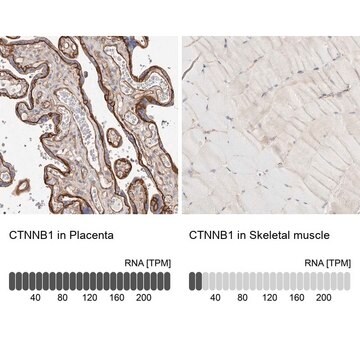Key Documents
C7617
Anti-Calnexin antibody, Mouse monoclonal

clone TO-5, purified from hybridoma cell culture
Synonim(y):
Anti-CANX, Anti-CNX
About This Item
Polecane produkty
pochodzenie biologiczne
mouse
białko sprzężone
unconjugated
forma przeciwciała
purified immunoglobulin
rodzaj przeciwciała
primary antibodies
klon
TO-5, monoclonal
Postać
buffered aqueous solution
masa cząsteczkowa
antigen ~90 kDa
reaktywność gatunkowa
human
rozszerzona walidacja
independent
Learn more about Antibody Enhanced Validation
stężenie
~2 mg/mL
metody
flow cytometry: suitable
immunocytochemistry: suitable
immunohistochemistry: suitable
indirect ELISA: suitable
western blot: 0.5-1.0 μg/mL using total cell extract of HeLa cells.
izotyp
IgG1
numer dostępu UniProt
Warunki transportu
dry ice
temp. przechowywania
−20°C
docelowa modyfikacja potranslacyjna
unmodified
informacje o genach
human ... CANX(821)
Powiązane kategorie
Opis ogólny
Specyficzność
Zastosowanie
- enzyme-linked immunosorbent assay (ELISA)
- immunoblotting
- flow cytometry
- immunocytochemistry
- immunohistochemistry
- immunofluorescence analysis
Postać fizyczna
Oświadczenie o zrzeczeniu się odpowiedzialności
Nie możesz znaleźć właściwego produktu?
Wypróbuj nasz Narzędzie selektora produktów.
polecane
produkt powiązany
Kod klasy składowania
10 - Combustible liquids
Klasa zagrożenia wodnego (WGK)
WGK 3
Temperatura zapłonu (°F)
Not applicable
Temperatura zapłonu (°C)
Not applicable
Certyfikaty analizy (CoA)
Poszukaj Certyfikaty analizy (CoA), wpisując numer partii/serii produktów. Numery serii i partii można znaleźć na etykiecie produktu po słowach „seria” lub „partia”.
Masz już ten produkt?
Dokumenty związane z niedawno zakupionymi produktami zostały zamieszczone w Bibliotece dokumentów.
Nasz zespół naukowców ma doświadczenie we wszystkich obszarach badań, w tym w naukach przyrodniczych, materiałoznawstwie, syntezie chemicznej, chromatografii, analityce i wielu innych dziedzinach.
Skontaktuj się z zespołem ds. pomocy technicznej







